inside
Cebu Country Club
Nothing exudes exclusivity in this city as the Cebu Country Club where members have to be invited, and non-desirables are blackballed. The roster only allows for 800 members at any one time. Much like how the Polo Club and Manila Golf Club in Forbes Park functions in Makati, the Cebu Country Club serves the same purpose to the chosen few among Cebu’s two million residents.

Nothing exudes exclusivity in this city as the Cebu Country Club where members have to be invited, and non-desirables are blackballed. The roster only allows for 800 members at any one time. Much like how the Polo Club and Manila Golf Club in Forbes Park functions in Makati, the Cebu Country Club serves the same purpose to the chosen few among Cebu’s two million residents.

Since early last year, change was in the air. A court battle lasting almost twenty years was won and a contentious election for a new set of officers was put behind.
The storied club was started during the American colonial period to serve the needs of the officers and their families. It was known as the United Service Country Club and was incorporated as a non-stock, non-profit organization in 1928, headed by William Palmer, an American who worked for the Philippine Railways. The members were composed mostly of Americans and the British expats, working for companies like Standard Oil, Smith, Bell and Co., Cebu Portland Cement and other foreign interests. A few locals were invited to join, most notably the brothers Ramon and Vidal Aboitiz, Jose Avila and Sergio Osmena Sr. It was expensive to join, the entrance fee was P75, while monthly dues were set at P15 per month at a time when one peso can feed a whole family for a day.

The US Country Club as it was known then, was located in what is now F. Ramos Street and contained a basic 9-hole golf course. When F. Ramos Street was being built, the club had to vacate, and the members relocated to Lahug near the UP area. They built another golf course around a one-room clubhouse with a bar. A piano and a phonograph were installed for its members. By the early 30s the city again decided to build a road to dissect the site, prompting the members to finally decide to buy their own property. A 53 hectares land that was part of the immense tract called the Banilad Friars Land Estate encompassing what is now known as the northern part of the city, from Banilad all the way to Mabolo and Lahug, was found. It was owned by the family of politician Tomas Alonso, who purchased it in 1911 as part of the Friar Lands Act that distributed large tracts of land for sale to the Filipinos. In an insightful newspaper article written by Patricia M. Alvarez in the 60s, the writer interviewed Don Ramon Aboitiz who recalled a Chartered Bank transaction of P25,000 as payment for the sugar land, a transaction that was to become the bone of contention sixty years later.
By 1937, the new clubhouse was finished with nipa roof and a second level. A 9-hole golf course, a badminton court and bowling alley were added, while the dance hall became the center of frequent social gatherings especially during American holidays like the Fourth of July and Thanksgiving. Despite dirt roads leading to that remote part of the city at that time, the area leading to the club was soon turned to residential villages for the members and their families.
The Japanese occupation in 1942 brought a halt to the club’s activities, and its facilities were used briefly by the Japanese, and later demolished to supply materials for their barracks.
After the war, Captain CJ Martin, who was then the club president, restored what was left of the club, using his personal resources at times. The remaining red cement floor became the patio for the new clubhouse that was formally opened in 1948 as a 2-storey building with a dance hall in the second level. By then, the officers decided to rename it as the Cebu Country Club, opening its doors to invite more members, including a few Filipinos and some American GIs who had decided to stay in the country. Captain Martin was a Southern gentleman and together with his wife Charlotte, loved to entertain. During the holidays, his household would serve eggnogs to the guests.

Amidst disputes regarding costs and the firm objection of Captain Martin who wanted to keep the club mostly as a gentleman’s club, a swimming pool was added in 1958. A professional club manager was hired soon after. In 1968, the golf course was expanded to 18-holes, and a Wednesday evening cocktails became a cherished tradition for the members. More importantly, the 60s ushered the entry of more locals to the club, and in 1965, the first Cebuano, landowner Antonio Paulin became president. He was succeeded by Celing Fernan, Hank Aboitiz, Cheling Garcia and Hugo Streegan during that decade. During the sixties and the seventies, Rosebud, whose husband the former Cheling Sala, was also a one-time president, recalls, “at the time, it was more or less the foreigners’ place. We had Casino Espanol and Club Filipino, so it was sort of a divided thing. But then more members were accepted. Our husbands were all very active. They had a group that, after office, they would come here to chat, exchange pleasantries, and the women would play. So it was really more of a socials club, with the children using the pool, while the ladies would play bridge.”
With the city’s rapid development after the war, the members had again outgrown the postwar clubhouse, and plans were set in motion for a larger one. To finance this, the club finally yielded and agreed to issue 800 proprietary memberships or POCs in 1970. Julius Neri, who was among those that bought the original subscription, remembers the fuss as most members complained at the offering price of P3,000 per share despite being offered at installment terms. The money raised helped build the current clubhouse. The rambling ranch house style with its slab roof was finished in 1981 and done by noted Architect Toto Unson. In one of her trips to the US, Rosebud Sala, who works closely with the architect as an interior decorator, mentioned a clubhouse in Missouri with one side designed for golfers and the other half was for entertaining. From that conversation, the great ballroom, still very much in use to these days, was designed. Thru the years, it had undergone several renovations and additions. Another uniquely sensible design was to situate the clubhouse close enough to the greens, and the club’s wide patio was made into an open coffeeshop — the perfect place to people watch with a good viewpoint to where golfers tee off in hole number 1, while others come in from hole number 9 and 18. The Verandah coffee shop is the club’s heart beat, where waiters know most anyone by name, and where at the start of the day, the news are discussed more vividly than the radio or TV talk shows.
By the mid 80s, share prices have risen to P42,000 and all 800 memberships were fully subscribed. Still, the club’s exclusive 100 voting shares remains an all-male domain and was dominated initially by the mestizo clique, composed of the Aboitiz and Escano clan, later a Filipino group was formed and in recent years the Chinese had their own strong voice. Today, the club is a cauldron of nationalities including a hundred Japanese and expats that reflect the city’s progress.
There are a handful of women members in the general membership list who either inherited the share from their husbands, and in one case, the General Manager of a 5-star hotel was, by her position, handed the corporate membership. The women also managed to form their own CCC Ladies Chapter headed by Mrs. Sala and the late Ada Martinez.

To join the club, an aspiring member has to be invited or sponsored by a member, their application posted for 30 days in the club’s bulletin board, and their confirmation decided on by a quorum of the seven sitting officers of the club, who work purely without compensation.
THE COURT CASE In 1992, a court case was filed claiming ownership of a sizable parcel of land in the midst of Cebu Country Club’s sprawling enclave. The third generation heirs of Tomas Alonso claimed that the title of Lot 727 composed of 36 hectares, had never been part of the transfer of title to the club, and therefore should revert to the original owner. It was a costly lawsuit that bruised both parties financially and emotionally. Club presidents Benito Unchuan, Sabino Dapat and later Douglas Luym, who was elected into office from 1999 to 2011, chose to fight with all the strength of its 800 members. Lawyer Julius Neri who was part of the club’s legal team confirmed that the case was first heard at the Regional Trial Court, and when the plaintiff lost, they brought the case to the Court of Appeals and twice to the Supreme Court.
Sometime in 2002, when both the plaintiff and the defendant were deadlocked, an unexpected court decision was handed to revert the property back to the government, a decision that had vast consequences as this would also include neighboring affluent villages all the way to Ayala Business Park, that were originally part of the Banilad Friars Estate. It was also rumored that a wealthy third party was secretly funding the Alonso family in this lengthy battle. But the club officers were confident from day one of legal victory, and the fact that it went on for so long baffled members who were unanimous in the club’s strong defense. “There was no contingency plan on the table because we were convinced that we were on the right,” Montito Garcia who was then the Golf Chairman, looked back to the trial years. “At the worst possible scenario, the club would have to pay for the parcel in question, or perhaps reduce to a 9- hole golf course,” he answered when pressed to answer how the club would have handled it if the case was lost.

In the end, the members of Cebu Country Club, steered by a strong legal team and the leadership of Douglas Luym, were able to affirm ownership by the strength of its argument that there was no attempt by the second generation Alonso to make any claims or pay taxes during the last 50 years, as well as a piece of legislature authored by Congressman Raul del Mar affirming the titles of owners who bought pieces of the Banilad Friars Estate as valid. At the time, titles required the signature of the Secretary of Agriculture and Natural Resources, and most of purchases were missing this. A decisive decision by the Supreme Court in January 2011 put a rest to the matter.

WHAT’S AHEAD
Last year, the current board of officers were elected with Montito Garcia, a secondgeneration president following his father Cheling Garcia in the 60s, as president. Montito is a regular fixture in the golf course, sometimes competing professionally, and is considered a popular president because of his easygoing demeanor. With House Chairman Eddie Alegrado, Edward Go, Antonio Florendo, Jose Suaco, Frederic Chiongbian, Edwin Medalle, and Jeric Hechanova as the club’s General Manager, on his team, they have laid out a map for the future. From the start, without any working budget, a committee was formed composed of Eddie, Rosebud Sala and Boy Escano to do some improvements. Working piecemeal, they started with the basics – a leaking roof in several spots was finally fixed after years of neglect, and a repainting job followed. “I selected the paint—the men were very nice to ask me to choose the color of the paint and the curtains. So I think we actually did a pretty good job because the men are very happy about it. You know it’s hard to please so many members, but with this, it seemed like a unanimous thing—they all liked it,” Rosebud replies when asked how the paint job came about. The minor changes worked on available cash flow had made the club a more welcoming place for members – gone are the dark woods and hallways. More importantly, Eddie Alegrado’s meticulous guidance resulted in a state of the art kitchen that is HACCP certified. HACCP is a food safety handling protocol that was originally instituted by NASA to protect the health of the astronauts in space, and is now a standard requirement in the food industry. “Our kitchen has also stopped using transfat, a food shortening material commonly called lard. It is not pork lard but lard or solid white fat made by cooking oil factories. Its process uses metals to solidify the oil and the resulting product is generally referred to as transfat,” Eddie points out to a healthy benefit that members can now expect.

According to Eddie the board has been working on the idea of putting Cebu Country Club in the map as a premier golf club in the country that is family oriented. The voting members have positively responded to this call and unanimously approved the proposal to re-design the golf course to championship-course level with a new clubhouse. To this end, the club has already signed an agreement with the Jack Nicklaus Company. Surveyors are currently taking topographies of the golf course while consultations are being made on the funding aspect. The board hopes to see some action by the summer of next year.
Eddie further relates that the club is immensely capable of raising the required financials. “What is now being studied and debated is what funding is most beneficial to the club and its members. Many great ideas, mostly coming from the members themselves, are being closely studied. We have three hectares of high value commercial space right along the Banilad road. Offers from real estate developers to develop it are filtering in and banks have signified their eagerness to back up the project if we decide to undertake the development ourselves. The club can also build and sell condo units or sell additional POCs. It can sell non-golfing memberships and/or ask current POC holders to chip in and so on. The possibilities are there. It is now just a matter of making the best choice as to which way to go as far as funding is concerned.”


“The club operates as a non-profit, we don’t distribute dividends, so really the only value to the members are for them to enjoy the facilities so that is why we are looking at making the club more family friendly. Also, because of the improvements, we have seen the price of shares rise up,” Montito adds. Currently, shares are set at 4.3 million pesos, although it is hard to find sellers. “There are many possibilities, a new clubhouse is a strong option. I’m personally leaning towards going back to our roots – colonial architecture is timeless and a trend among golf courses now. Cebu Country Club can certainly claim to that heritage. We are talking to developers, foreign and local, to do a masterplan, and as far as what has been shown to us, the next three years should be interesting,” he concludes.
- by Emcee Go
- photography Jerald Donal and Adrian Yu
inside
Butch Carungay’s 50th in Neverland
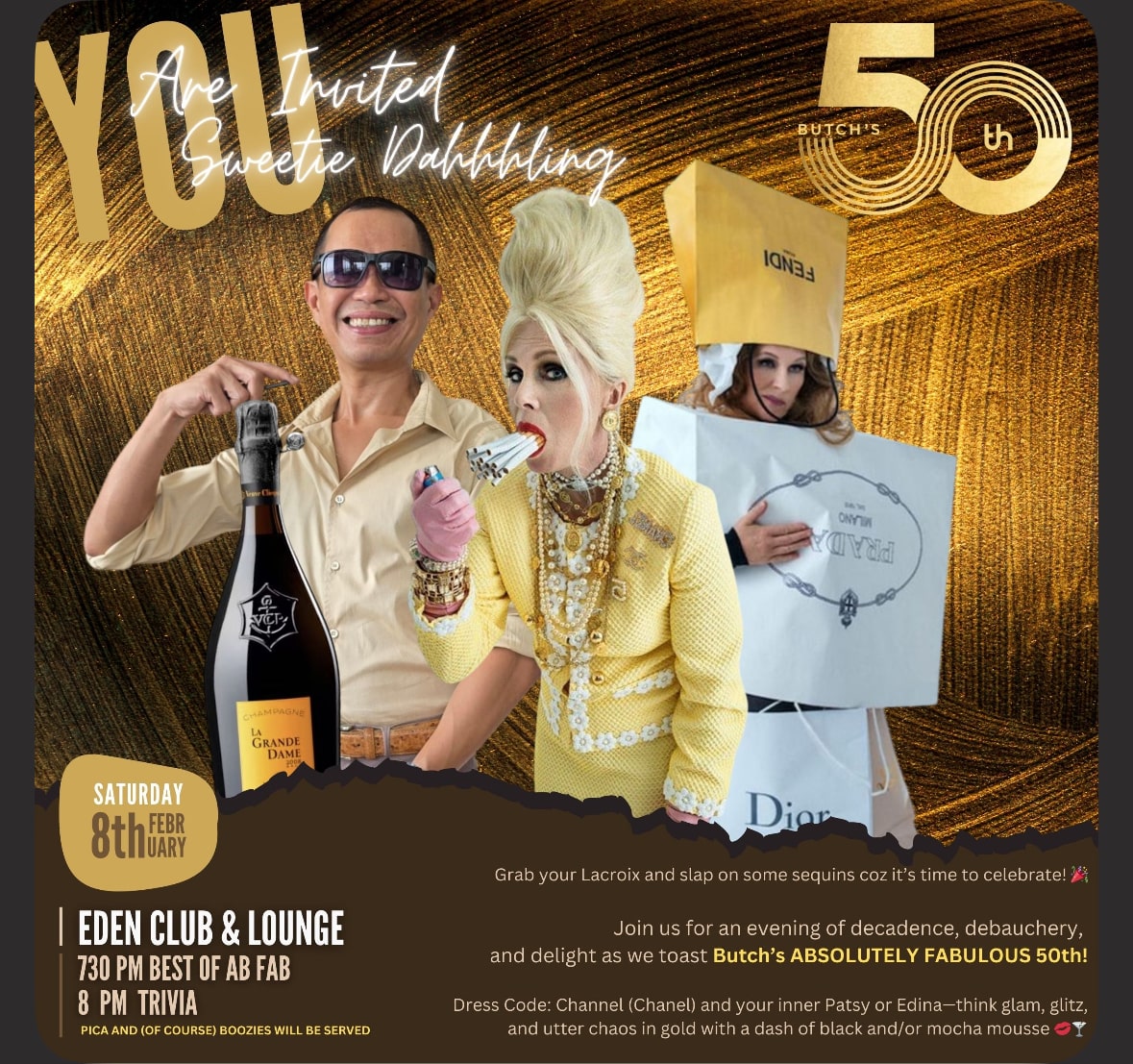
By Emmanuel Hamoy
Cebu’s glitterati came out in full force for Butch Carungay’s 50th birthday bash at EdenClub. It was a fun-filled night overflowing with Pol Roger, trivia games whilst traipsing the light fantastic.

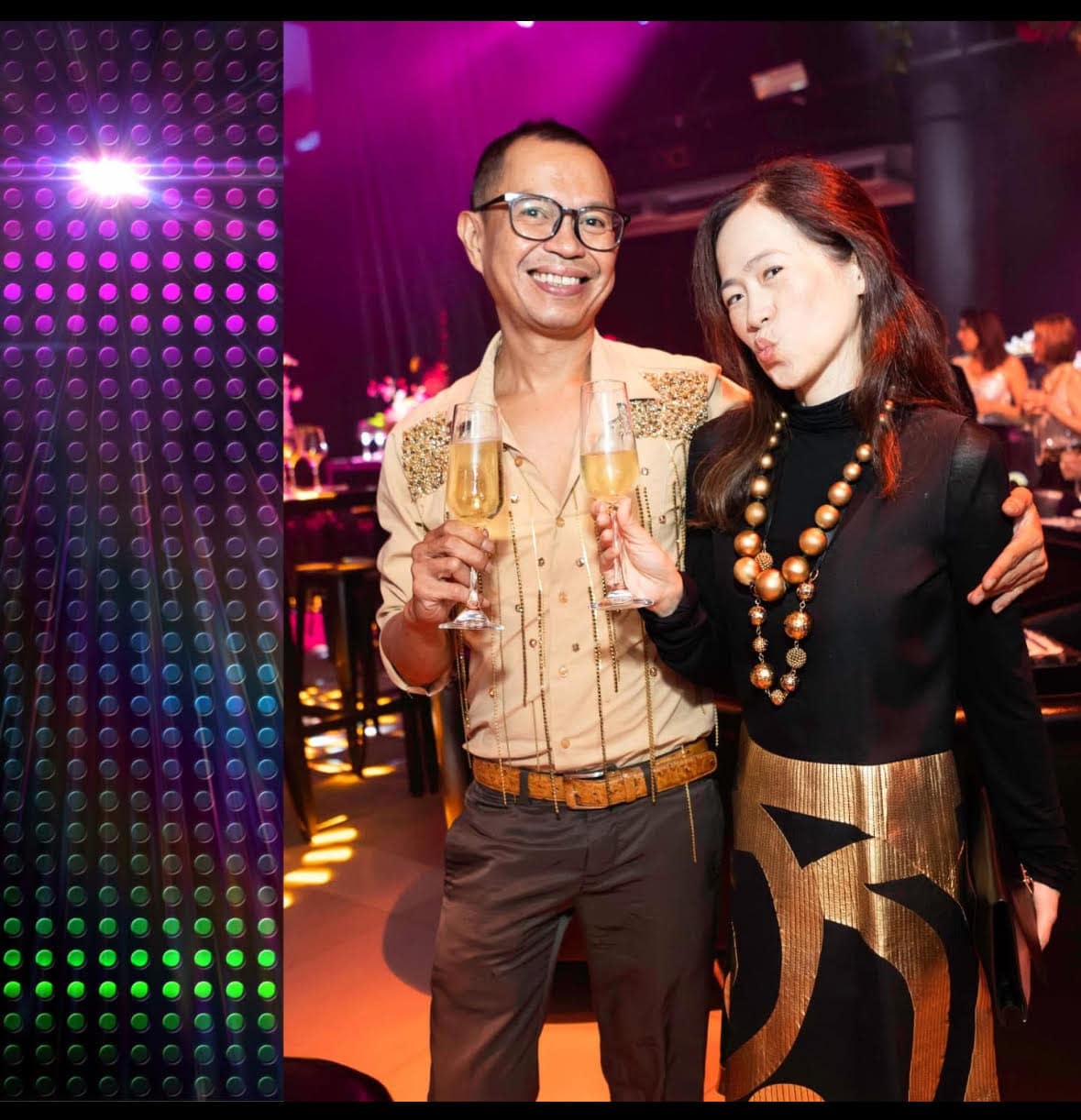
Butch Carungay and Janice Lin.
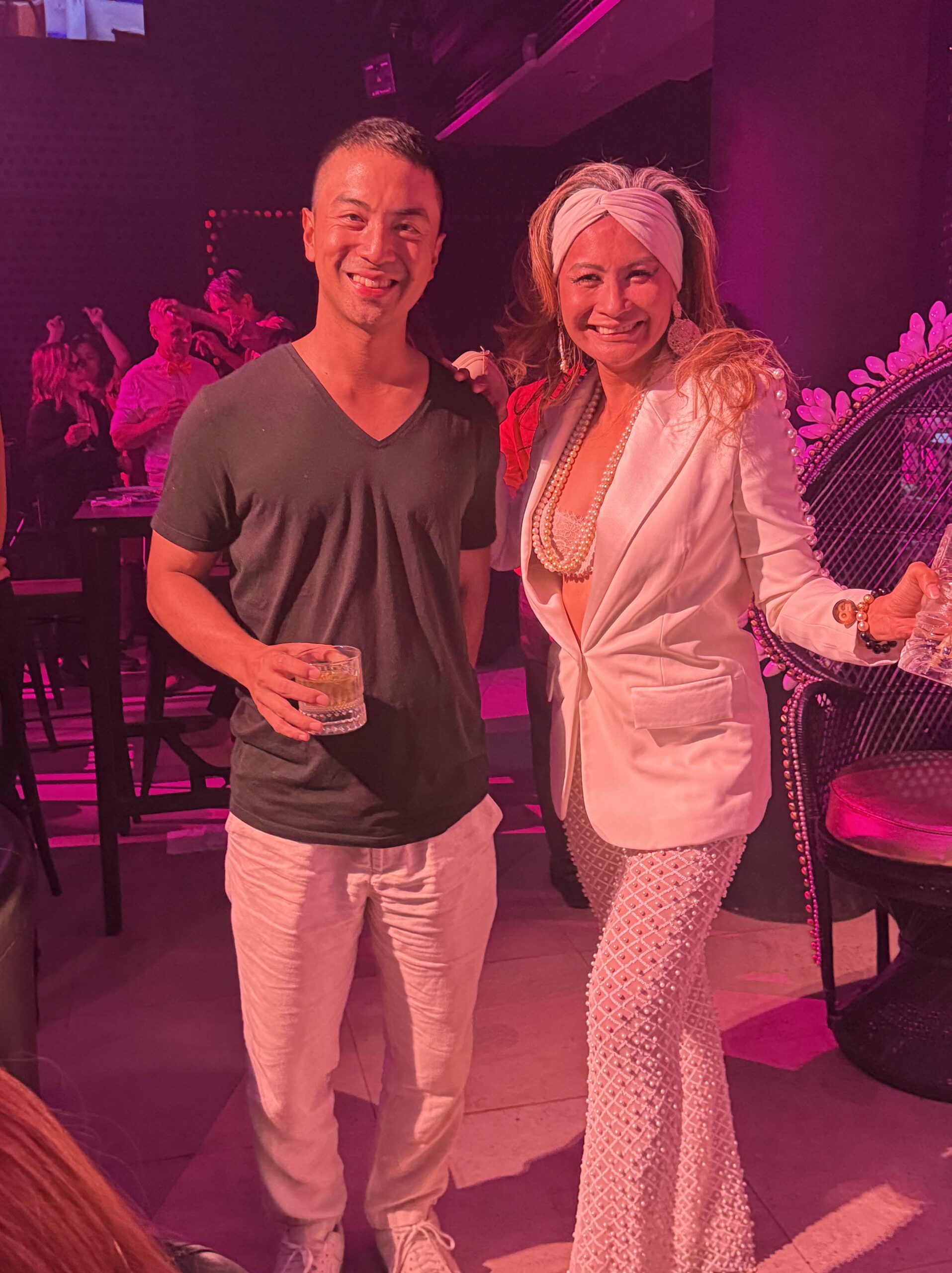
Gerry Laperal and Lotte Delima-Edwards
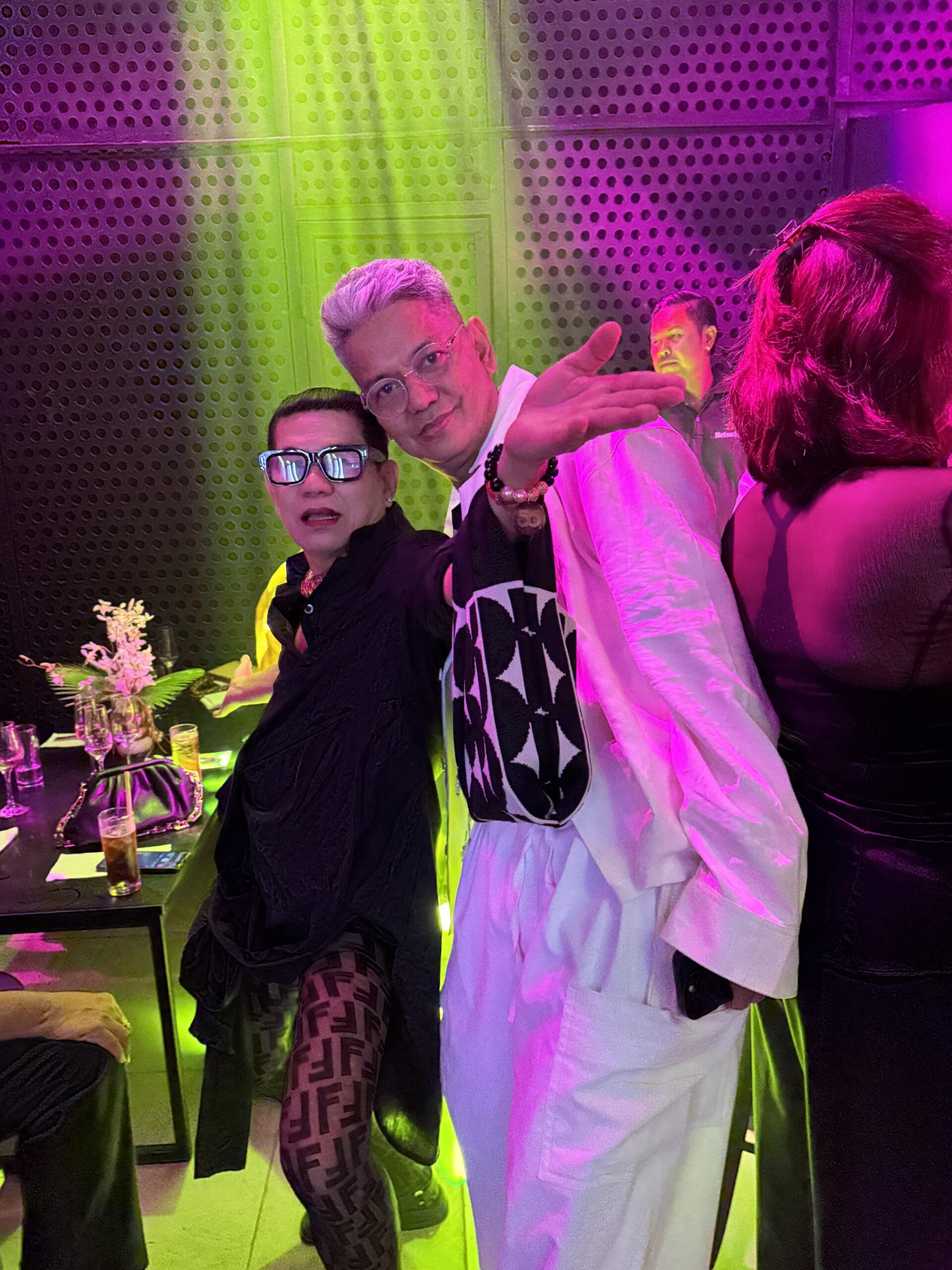
Romero Vergara and Oj Hofer
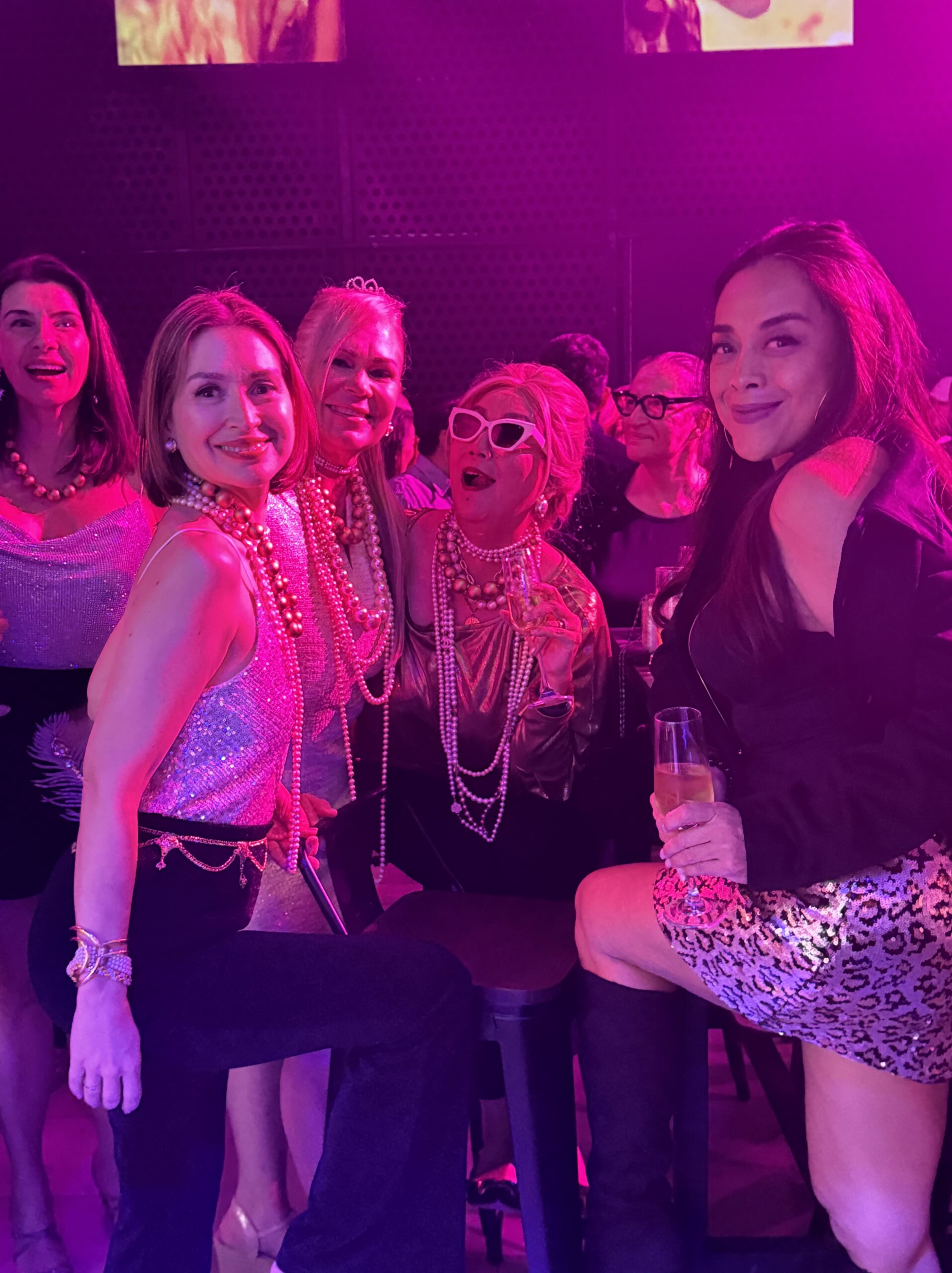
Mary Anne Aboitiz, Christine Pelaez, Tamsin Booth, Frances Siao and June Alegrado
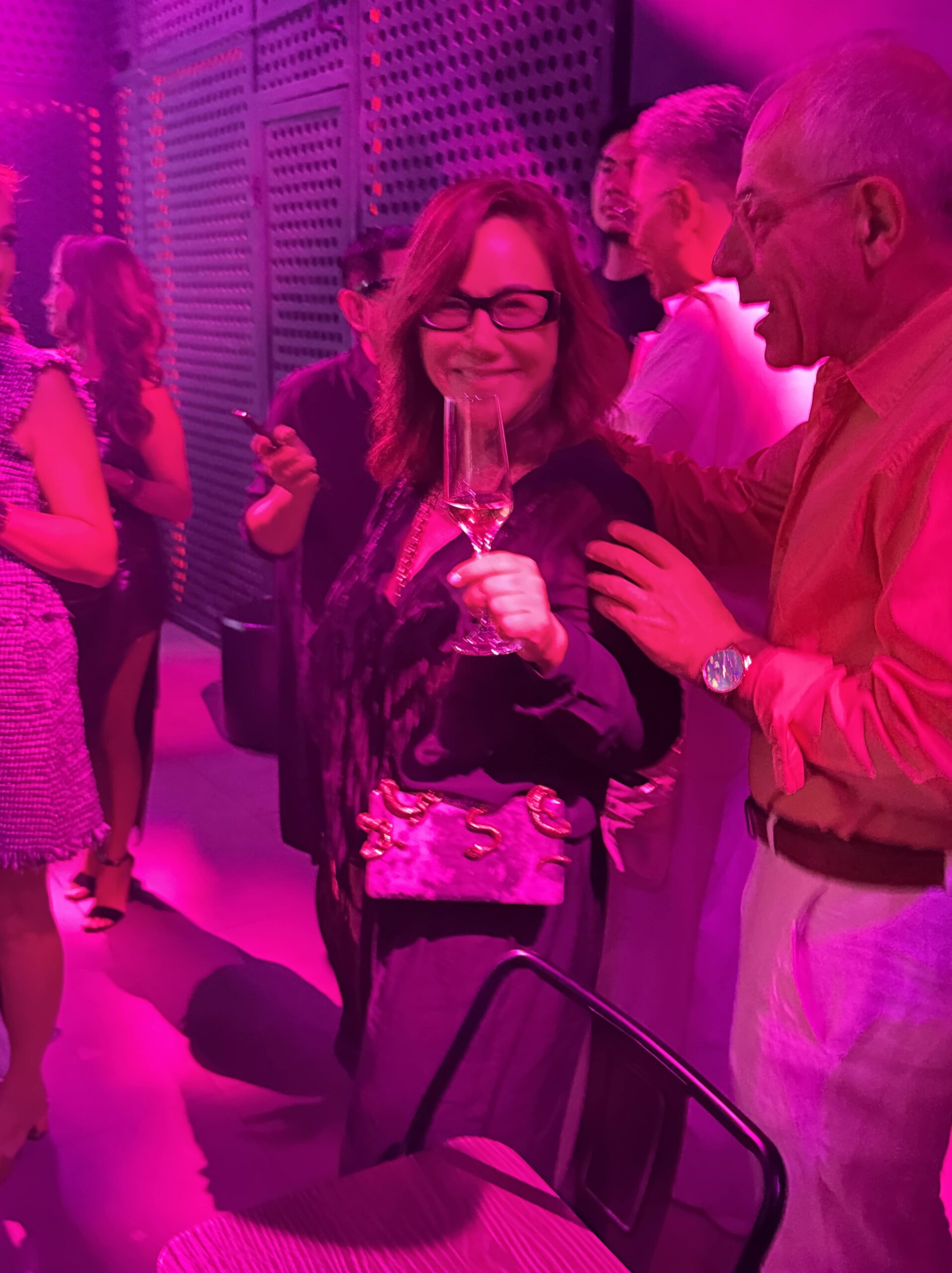
Maris Holopainen and Carlo Cordaro
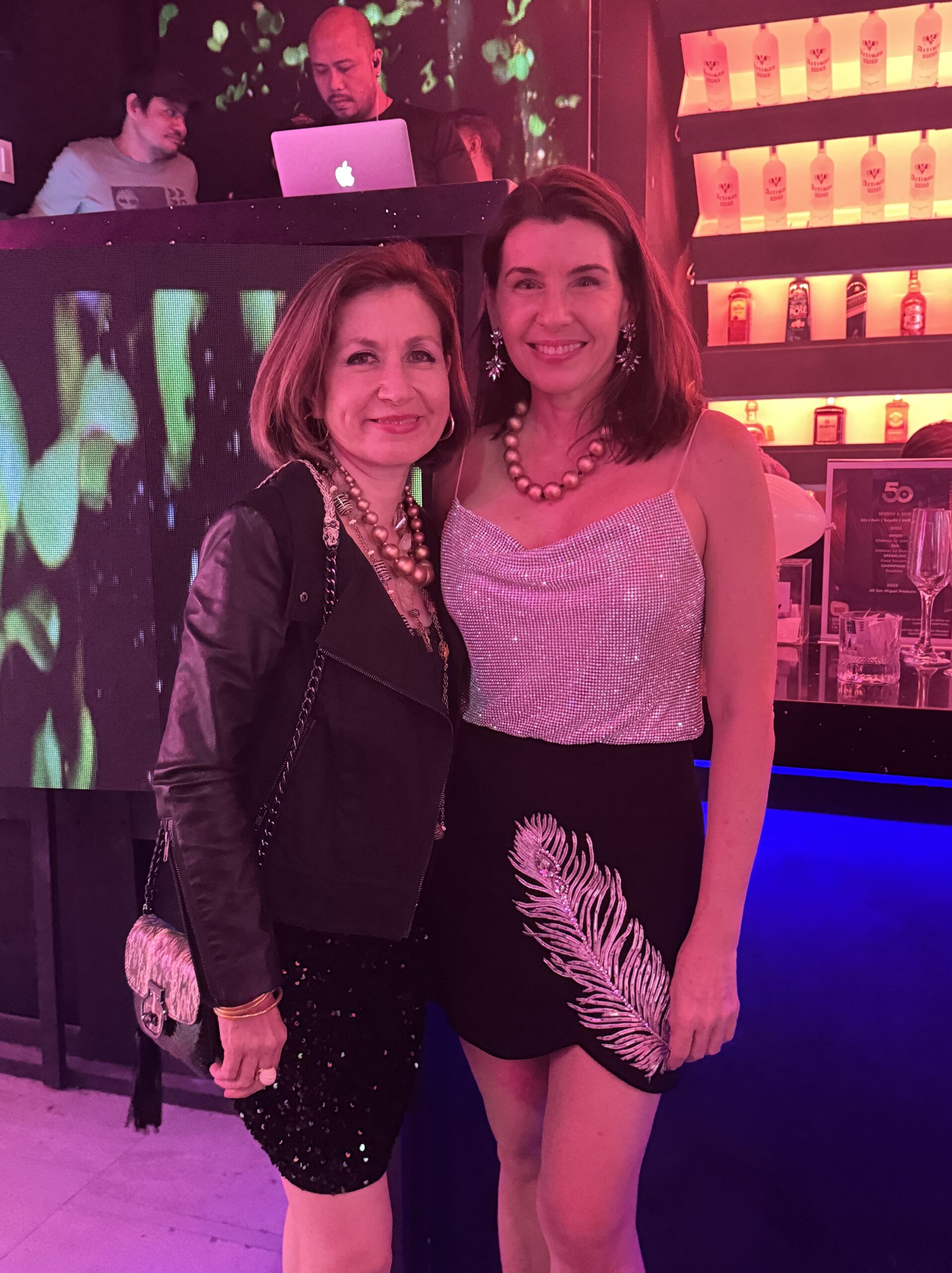
Janine Taylor and Mary Anne Aboitiz
Fashion
Lucky Colors of 2025: Harness the Energies of Emerald Green & Carmine Red for Success
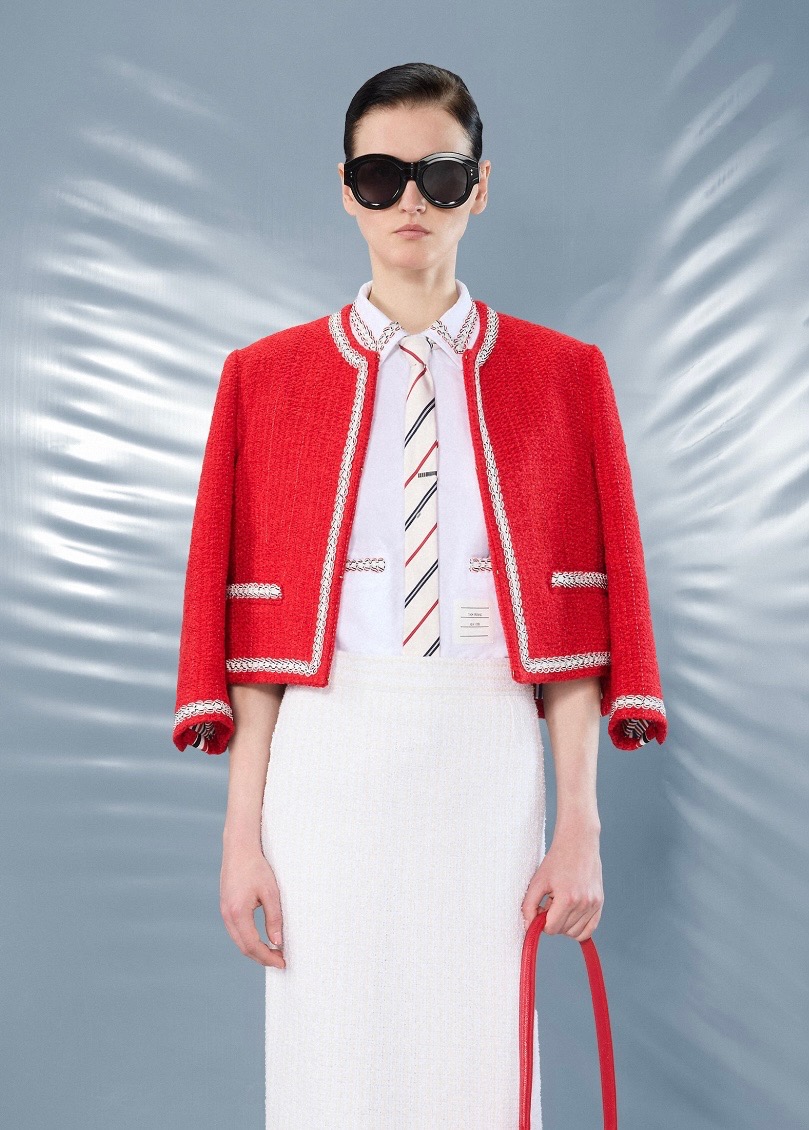
by Oj Hofer
With the Year of the Wood Snake underway, understanding the significance of lucky colors can help align us with its energetic flow. Rooted in Chinese astrology and Feng Shui, the year’s fortifying shades—emerald green and carmine red—offer mindfulness and good intention attracting luck, and fostering personal growth.
Emerald green, associated with the Wood element, symbolizes renewal, clarity, and inner peace. In the year of the wood snake, its dynamic energies will empower and inspire you, fostering growth, renewal and wise transformations. The hue is ideal for moments of self-reflection, study, or creativity. Wearing or incorporating this shade into your space enhances balance and mental focus.
Carmine red, linked to the Fire element, embodies passion, confidence, and vitality. This year, which according to the Bazi Four Pillars Chart, has a lack of metal, earth and fire elements, it will bring balance and the propitious energies. It’s perfect for professional meetings, decision-making, and moments requiring assertiveness as a splash of red can energize and embolden you throughout the day.
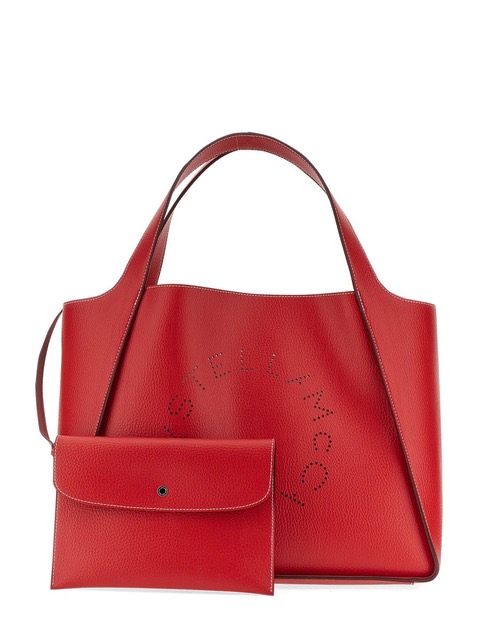
Stella Macartney vegan Leather tote

Stefano Ricci silk tie with paisley print
To fully harness their benefits, use these colors in a contemporary, mobile context; through clothing, jewelry, bags and accessories. Alternate between these two potent tints based on your needs. For example, wear green for calmness and clarity when you are going into stressful and mind challenging meetings or appointments. Choose red when you are going into places or situations where you need courage and motivation such as fashion galas, elite socials, prestige affairs, VIP gatherings and so forth.
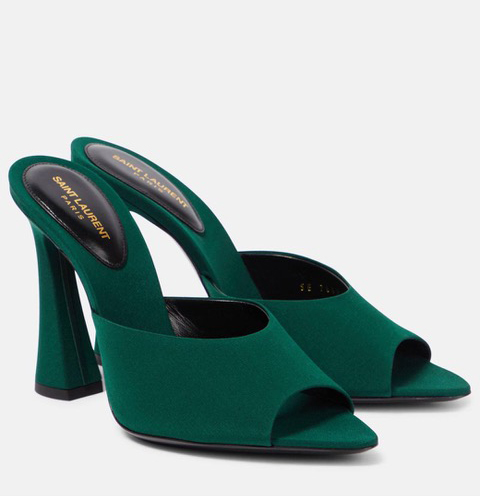
Saint Laurent crepe de chine mules
Optionally, you can also choose to wear these colors inconspicuously in small details, such as a garnet or jade bracelet, or a ruby or emerald pendant and earrings set. Men can wear a burgundy or forest green tie or pocket square, or casual polo shirts with poppies or with botanical prints, or jade and garnet jewelry. Doing so can subtly align your energy with the year’s vibrational flow.

Jan Leslie emerald bracelet

Daily Mood Cuff Links with red tiger’s eye tubes
The use of colors is more than just aesthetic choices or preferential picks. Colors can serve as energetic tools, reminding you of your good intentions and keeping you mindful of you daily motions. Effecting an optimistic mental state in the wearer, they can effectively shield you from negativity while fostering prosperity and emotional balance. Thoughtfully incorporating them into your wardrobe and surroundings ensures that you move through 2025 with confidence and the right intentions.
Embracing emerald green for tranquility and carmine red for strength are intentional, mindful choices that have the power to transform your energy and shape your path forward. May you have the best of luck in navigating through Year of the Snake with harmony, energy, and the power to attract good fortune.
inside
The Java Jive
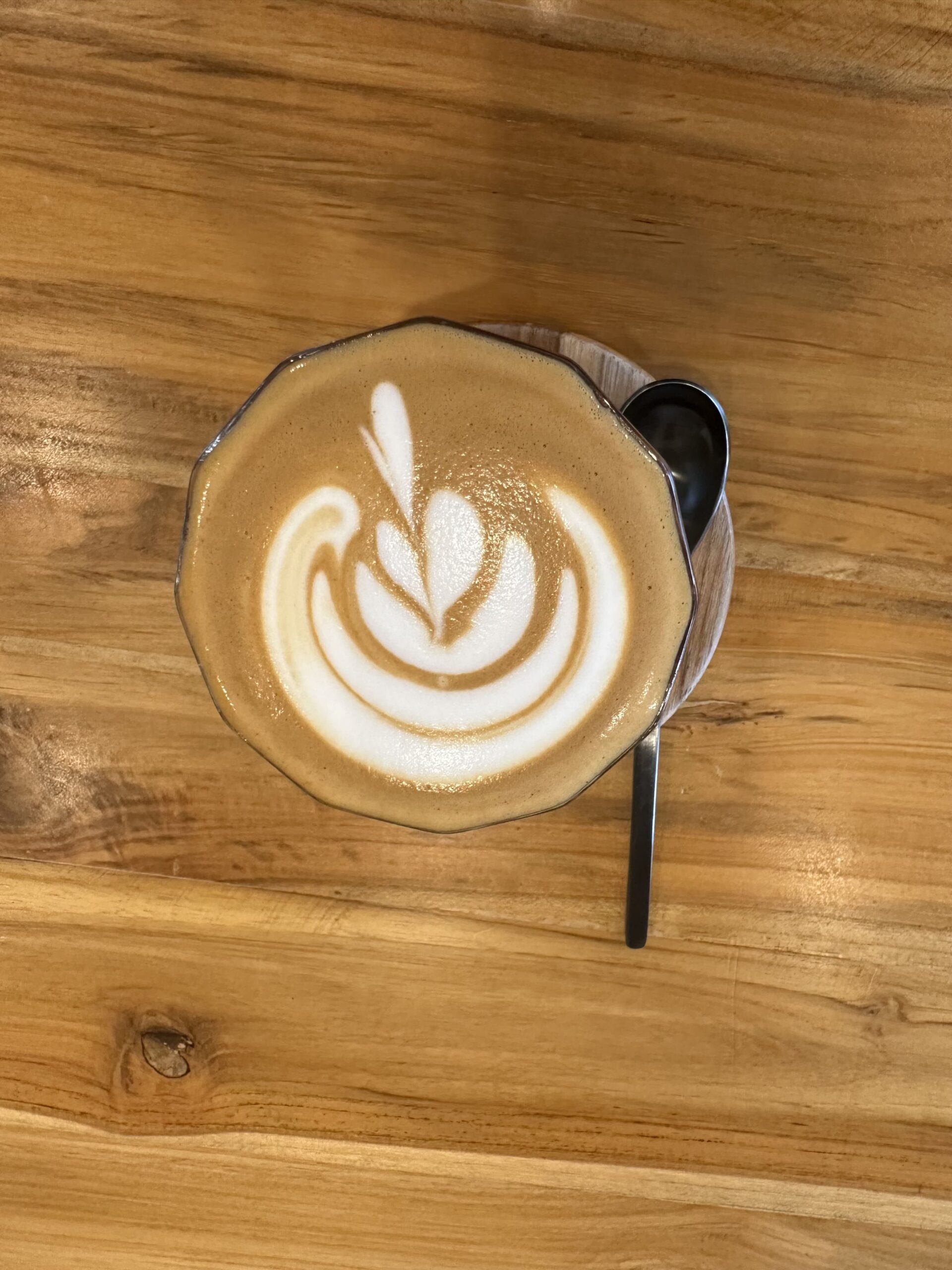
by Janine Taylor
“Coffee is more than just a drink; it’s something happening. Not as hip, but like an event, a place to be, but not like a location, but somewhere within yourself. It gives you time, but not actual hours or minutes, but a chance to be, like be yourself, and have a second cup.” — Gertrude Stein, American novelist and poet
Coffee, that magic potion in a cup, is our morning savior and the fuel that helps us get through the day. Whether you’re a stickler for the classics and prefer an espresso or need to start your day with some café au lait or a cappuccino, and yes, we live in the tropics, so iced coffee is good too, we all need our caffeine fix!
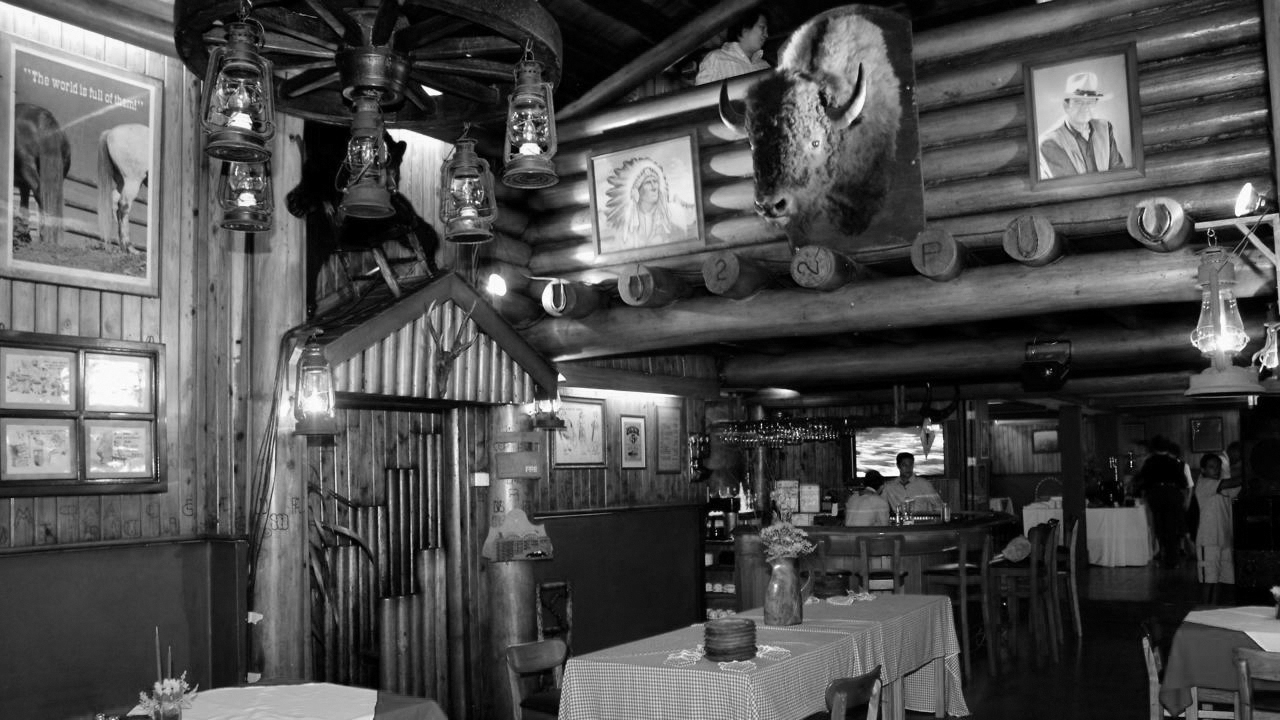
The interiors of Eddie’s Log Cabin
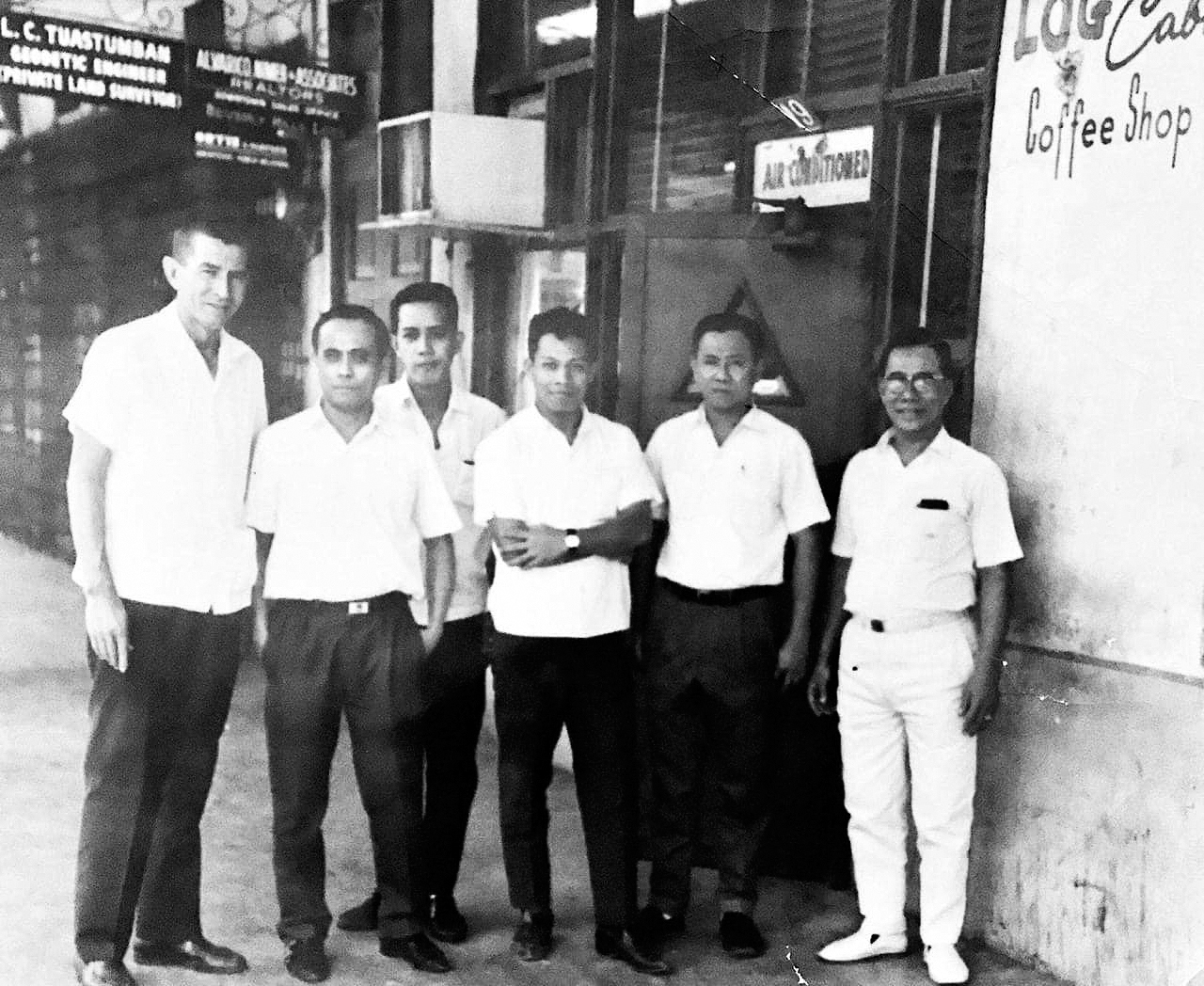
Eddie Woolbright with the original waiters of Eddie’s Log Cabin
Growing up in Cebu decades ago, our earliest memories of coffee were the aroma wafting from the percolator at Eddie’s Log Cabin as soon as you opened the doors. You then stepped in for a cup of Joe and a slice of pie. For our parents’ generation, the ultimate sophistication was a cup of “brewed coffee” because, at home, it was freeze-dried instant coffee with powdered creamer and sugar. Folgers was the coffee of choice. Hyperacidity in a cup when you think about it!
Starbucks descended on our shores in December 1997, and our vocabulary suddenly expanded with venti, grande, and Frappuccino. People were willing to pay exorbitant amounts for a cup of coffee. But more than that, it was an experience. It was, all of a sudden, the place to be seen. It was trendy to have coffee at all hours of the day and not just for breakfast.
Cafes have now become the place to meet up with friends, a venue for meetings, and even a space to work from, and you don’t have to be a digital nomad. You can get caffeinated in air-conditioned comfort with WIFI and a snack.
“Seattle has unleashed this weird phenomenon called the coffee shop on the world. And the coffee shop, thanks to Starbucks, is the place where socially isolated, lonely, needy people gather together to ignore one another.”
— Mark Driscoll, American author
Armed with the adage that you can never have too much caffeine, we spent an afternoon visiting three great joints in the city.
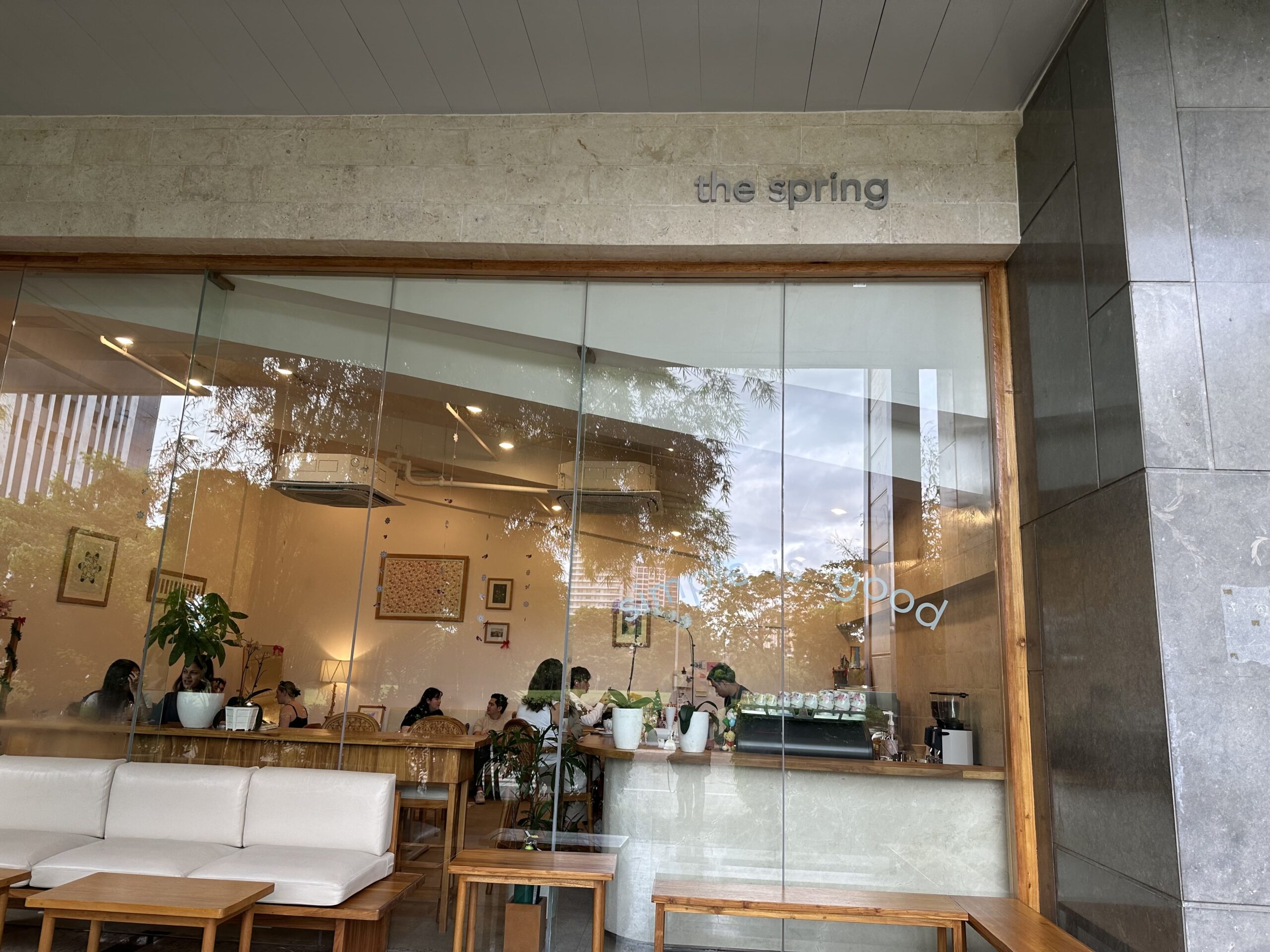
The Spring creates the perfect escape for relaxation and comfort.
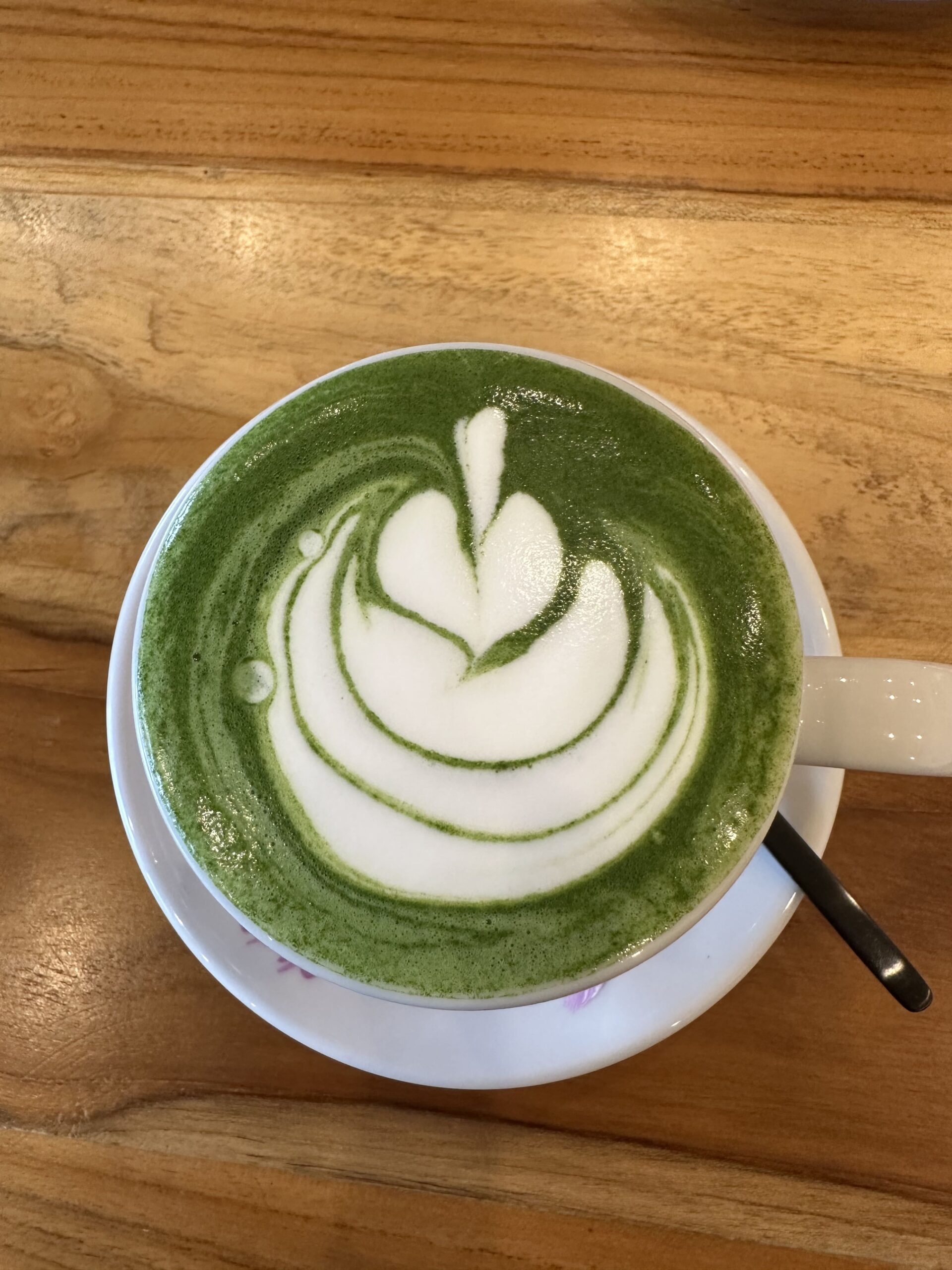
Matcha latte
The first stop was The Spring, with Scandinavian-inspired interiors and a super chill vibe. A hands-on young owner, Ange Delas Penas, knows her beans well. She was behind the counter, expertly brewing using filters I had never seen before, which she said she purchased in Taiwan. Her team of trained baristas can also whip up some tasty brews, from a cortado to a matcha latte, my latest addiction.

The inviting café interiors of Commonly Uncommon
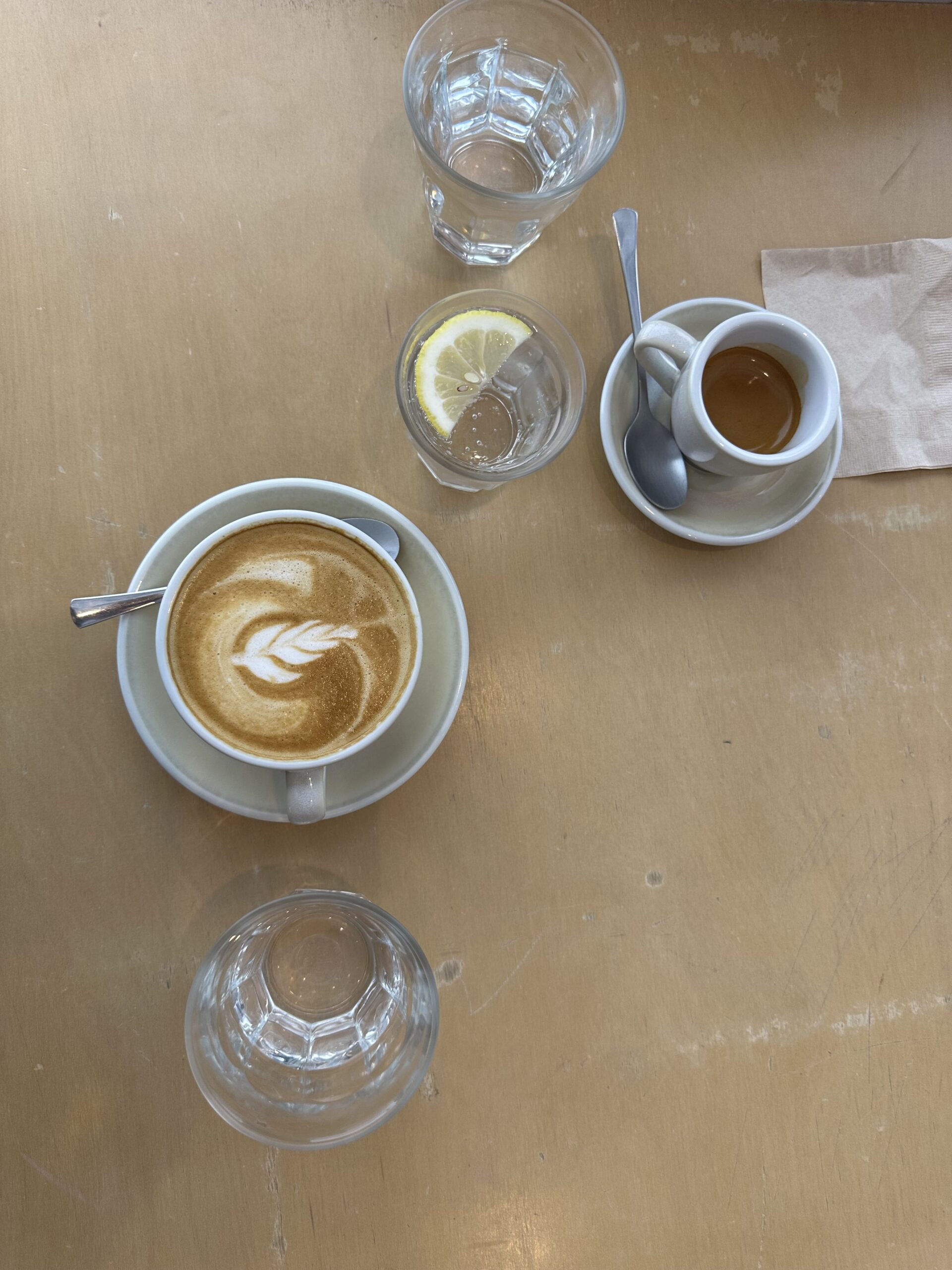
Latte and espresso
Taking a different route to avoid a flash flood, we dashed out of the car into the warmth of Commonly Uncommon at Crossroads. Don’t let this non-descript, industrial vibe fool you; this java joint knows its craft. Commonly Uncommon uses single-origin beans and, like most cafes these days, also offers coffee alternatives. They are unpretentious and bent on giving the customers the specialty coffee they want, sans judgment. If you prefer oak milk or sugar or enjoy iced drinks, you get what you want. Hence, you will see diverse patronage, from those armed with laptops and headphones to office peeps grabbing a quick caffeine fix to ladies who have lunch and everyone in between.
Plus, they are the only café that thinks of customers battling hyperacidity by offering antacid sachets, which we availed before contemplating our orders.
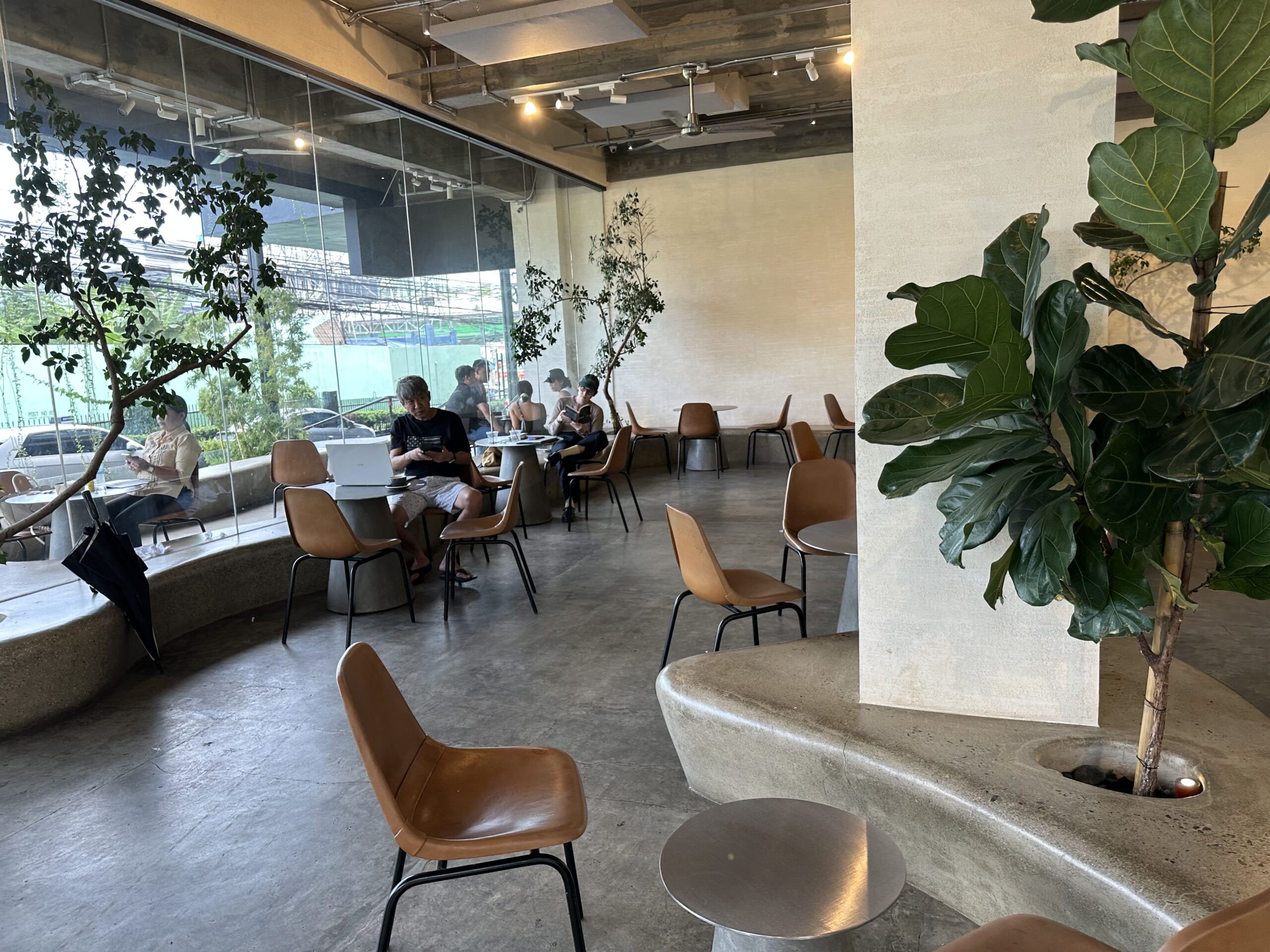
Tightrope’s laid-back interiors, designed for comfort and creativity
Our caffeine-fueled afternoon’s final stop was Tightrope in the former Henry Hotel. Tightrope is the largest of the three we visited, with the same industrial vibe that is very common these days, and tattooed baristas. Large windows ensure that it is always bright, and this is where you will certainly run into someone you know.
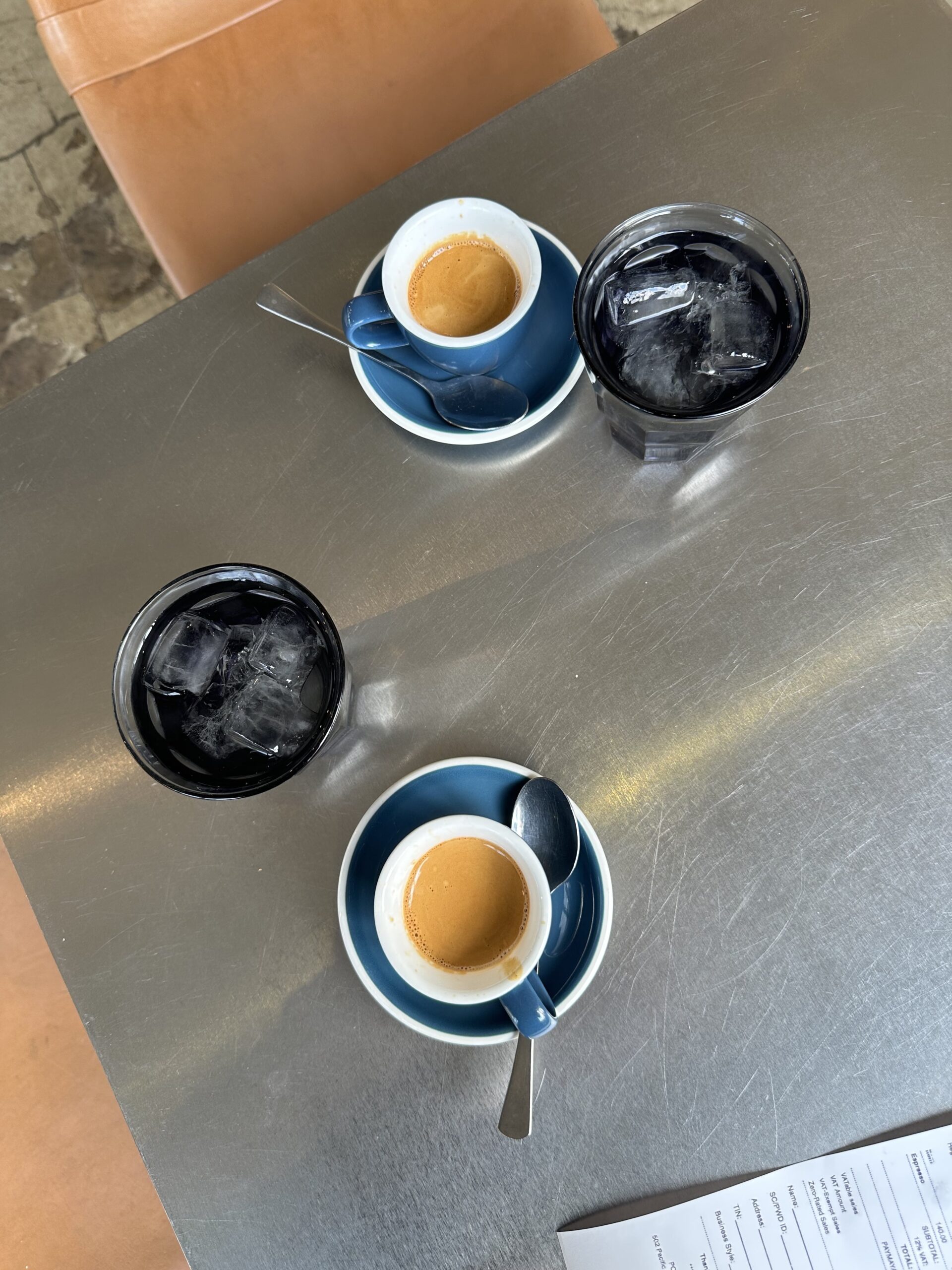
A bold and aromatic espresso shot, ready to awaken the senses.
As this was our third stop, and yes, we were ready to run a marathon after, as we were so pumped, we decided to stick to the classics and have an espresso because you can always taste the quality of a coffee in an espresso. Tightrope has a delicious burnt Basque cheesecake that can be shared, so you can also share the calories. Winding up a well-spent rainy afternoon with great coffee and gossip, we liked all three coffee shops, but Uncommonly Common really stood out.
-

 Style2 months ago
Style2 months agoHappy Melendres Traipsing Around Manhattan in Non-Stop Armani
-

 Arts & Culture3 months ago
Arts & Culture3 months agoKultura. Kapital. Kasalukuyan: Art that Speaks of Today
-
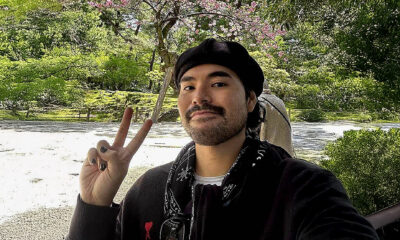
 Prime Target2 months ago
Prime Target2 months agoMiko Sarmiento: Turning Silk Scarves Into Works of Art
-
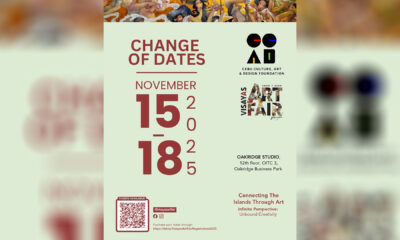
 Arts & Culture1 month ago
Arts & Culture1 month agoVisayas Art Fair Year 5: Infinite Perspectives, Unbound Creativity
-
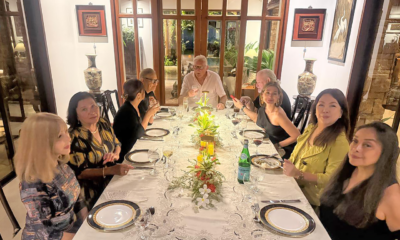
 The Scene3 months ago
The Scene3 months agoAnother Elegant Dinner at Chez Marguerite
-

 Prime Target3 months ago
Prime Target3 months agoLuna Vdl–Endless Summers in Siargao
-
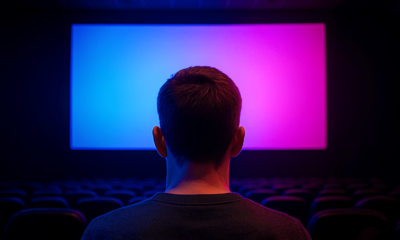
 QuickFx2 months ago
QuickFx2 months agoI Lost It at the Movies: Five of the Most Significant Films of the 1960s
-

 Travel1 month ago
Travel1 month agoAutumn in Istanbul: Fellow Travellers Share Turkish Delights





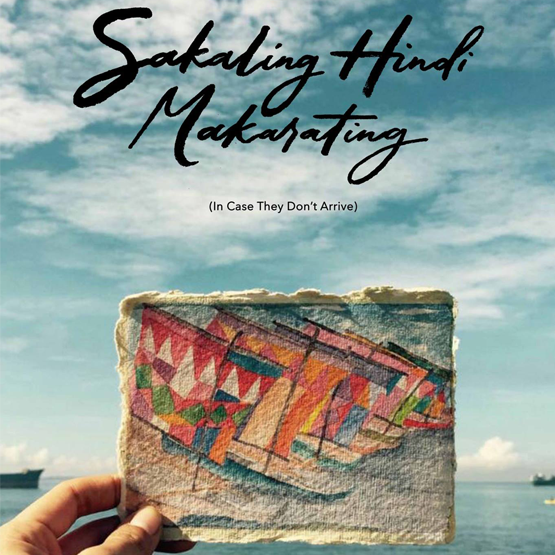




You must be logged in to post a comment Login